The oldest Porsche “911”…
by Mike Gulett –
The only surviving Porsche 901 prototype (chassis number 13327) won the Porsche 911 street car class at Amelia Island in 2013 and best in class at Pebble Beach in the Porsche 911 Road Car class and the award for “Most Historically Significant Automobile” at Pebble Beach the same year.
It is no surprise to me that this very special Porsche 901 (911) won all of these awards. This is after all the oldest Porsche “911” in existence and it has been perfectly restored by Don Meluzio, the owner, who found this car when no one knew that it existed and he brought it back to glorious life. All Porsche lovers should be grateful.
Below is my photo comparison of the 901 Prototype and my former 1996 911, followed by a history summary written by Don Meluzio and Porsche and finally a Historic Vehicle Association This Car Matters Video featuring Don Meluzio telling us about the 901 Prototype.
Comparing some features of the 901 Prototype to the 1996 911
The photos below compare the red Porsche 901 Prototype to my former silver 1996 Porsche Carrera 911, the last air-cooled engine 911 model.
The shape did not change much.
As a prototype, this car exhibits interesting detail differences from the production 901 and 911. Its manual sunroof slides forward to open, in contrast to the electrically-operated, rearward-opening roof that went into production.
Instruments are housed in two pods, rather than the large central tachometer and four flanking gauges, which have always been a trademark of the production Porsche 911.
On the prototype, hot air was ducted to the side window sills to keep the glass free of condensation; early 911s were not so equipped.
The front lid is counterbalanced by torsion bar springs, and the engine cover is held open by coil springs; the production version would adopt gas struts to hold the lids open.
The gas cap lid is round on the prototype and oval shaped on the production 911.
The following information was supplied by Porsche and Don Meluzio
In the early 1960s, Porsche prepared to introduce a new model that would eventually replace its venerable 356. Over the years, several early design and engineering studies were built, based in part on 356 principles.
As production of the new model approached, Porsche reserved ten consecutive “replacement chassis” numbers for pre-production cars. Factory records show that only four numbers were actually assigned to bodies. Of the four cars built, only one is still known to exist – chassis number 13327, the vintage Porsche on display at the New York International Automobile Show.
As a prototype, this car exhibits noteworthy detail differences from the later production versions. Its manual sunroof slides forward to open, in contrast to the electrically-operated, rearward-opening roof that went into production.
Instruments are housed in two pods, rather than the large central tachometer and four flanking gauges, which have always been a trademark of the production Porsche 911.
On the prototype, hot air was ducted to the side window· sills to keep the glass free of condensation; early 911s were not so equipped.
The front lid is counterbalanced by torsion bar springs, and the engine cover is held open by coil springs; the production version would adopt gas struts to hold the lids open.
Many components of Porsche #13327 are immediately recognizable to 356 owners. A passenger assist handle from the 356 C model is attached to the right A-pillar. The steering wheel and horn ring were also taken directly from the late 356 models. Its braking system, too, is taken over nearly unchanged from the last of the 356 line, the 356 C.
Porsche has always prided itself on cars that are “made by hand”, but nowhere is this more evident than on this prototype 911. The fuel tank is built up using more than 20 hand-formed steel panels, welded together to form a single fuel cell.
The door sills and seat rails are also hand-made, with abandoned seat mounting holes and file marks in evidence. The car was obviously the object of extensive experimentation. Over time, several different, mutually exclusive heating and ventilation systems, including a gasoline heater, were installed; experiments finished, the abandoned openings were sealed by small aluminum plates.
In the exotic world of hand-crafted, custom-bodied automobiles, it is not unusual for two cars to have apparently identical but subtly different bodies or even to exhibit dimensional differences from side to side. The first 911 shows some of these traits, indicating that it was built to a tight schedule, possibly for one of the major European auto shows of early 1964. Some trim items vary dimensionally from side to side, and the backs of the gauges bear a September 1963 date stamp.
The new Porsche Type 901, as the car was called, was introduced to the automotive world on September 12, 1963, at the Frankfurt International Automobile Show. Series production lay a full year in the future.
At the time of its introduction, the Porsche 901 offered the next step up in performance and top speed from Porsche’s top model of the time, the 356-based Carrera 2000 GS. Production Porsche 901s began to come off the Zuffenhausen assembly line in September 1964, along with the last of the 356 models, which would remain in production until the end of April 1965.
In October 1964, just a month after the start of production, the designation of the new six-cylinder Porsche was changed to 911, to avoid a possible conflict with Peugeot, which had always had a zero in the middle of its model designations.
Although many parts of Porsche #13327 were still of a cut-and-try nature, it was powered by Porsche’s then-new six-cylinder boxer engine, essentially in the form in which it would reach production. Many of this powerplant’s characteristic design features are still with us today in the engines of the Porsche 911 Carrera 2, 911 Carrera 4, 911 Turbo, and their derivative special models.
With bore and stroke of 80x.66 mm, the early 911 engine displaced only 1991 cc (121.5 cubic inches), developed 128 horsepower at 620.0 rpm and 119 Ibs.-ft. of torque at 460.0 rpm.
Porsche #13327 sits on a wheelbase of 86.8in. (220.4mm); in the late 1960s, Porsche increased the wheelbase to 89.4 in. (2272 mm). Front and rear track are 52.4 in. (1332 mm) and 51.7 in. (1312 mm) respectively. Overall length is 162.8 in. (4135 mm ); at 168.3 in. (4275 mm ), today’s cars are nearly 6 inches longer. At the time of its introduction, the 911 was about 5 inches longer than the 356.
With 128 horsepower available from two liters, the 911’s power output matched that of the exotic four-cam Type 356 Carrera 2, without the latter’s mechanical complexity. In top speed, too, the 356 Carrera and the new 911 were equals, with a maximum speed of 130 mph. In acceleration, the new Porsche achieved a zero to 60 mph time of less than 9 seconds and a quarter mile time of 16.4 seconds, again similar to the last of the 356 Carreras. In the early 1960s, such performance qualified the 911 as a supercar.
After service as a prototype and show car, Porsche #13327 was eventually used on the road by the late Richard von Frankenberg. Von Frankenberg had been with the Porsche car company since 1950, when production of the Porsche 356 relocated from Gmund in Austria to the more favorable conditions of Stuttgart. Over the years, he served as factory race driver, chalking up wins at Le Mans, the Mille Miglia, the Nurburgring, and countless other motor sports events. In 1952, with graphic designer Erich Strenger, he founded Porsche’s house magazine, Christophorus, and was working as its editor at the time of his death in 1973.
The Porsche 901 Prototype Owner Don Meluzio – The Video (2:37)
Let us know what you think in the Comments.
All photos by Mike Gulett.

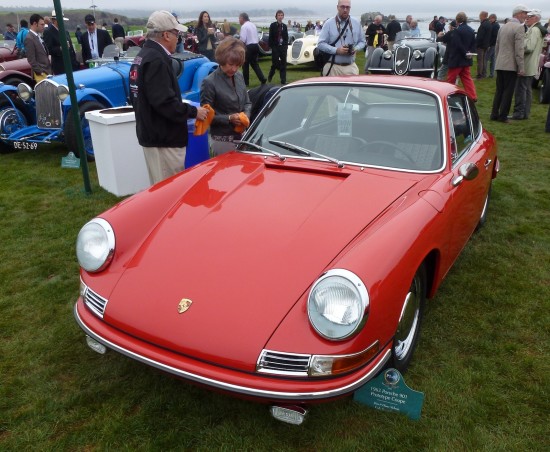
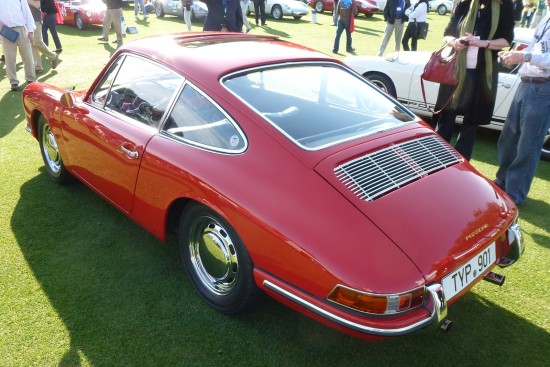
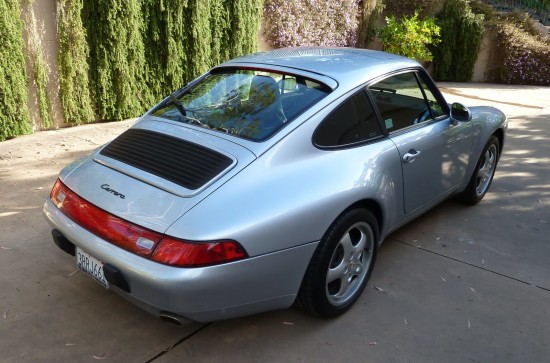
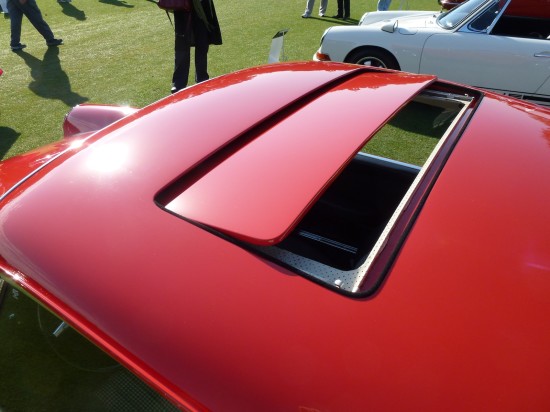
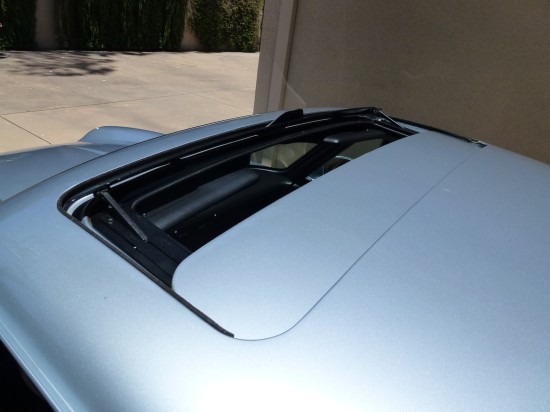
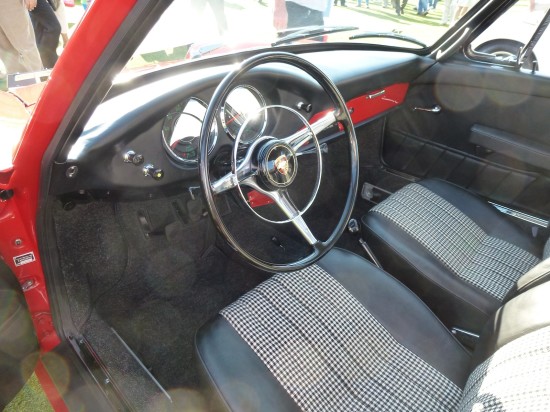
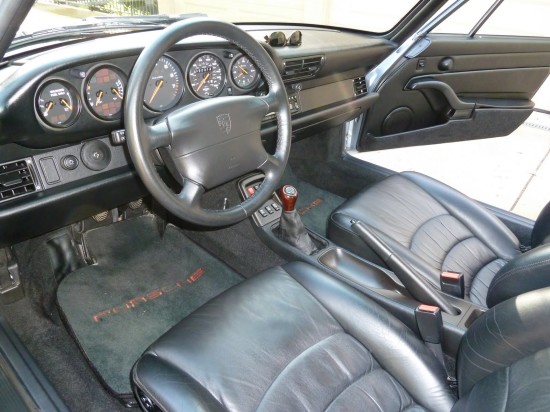
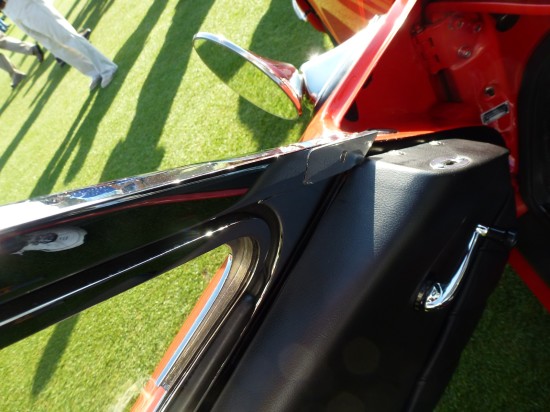
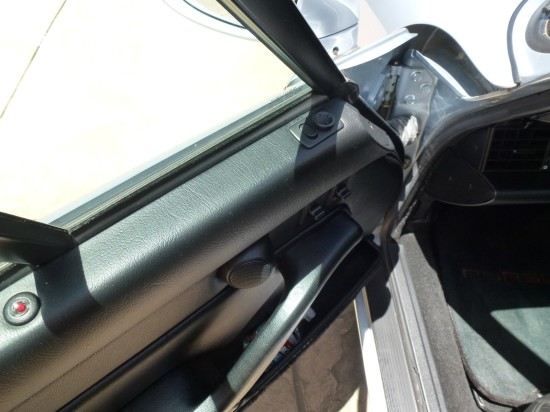
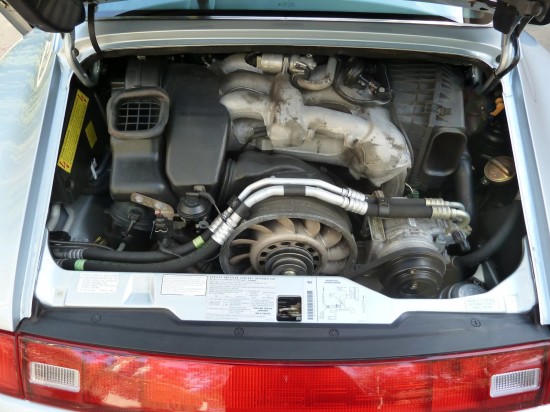
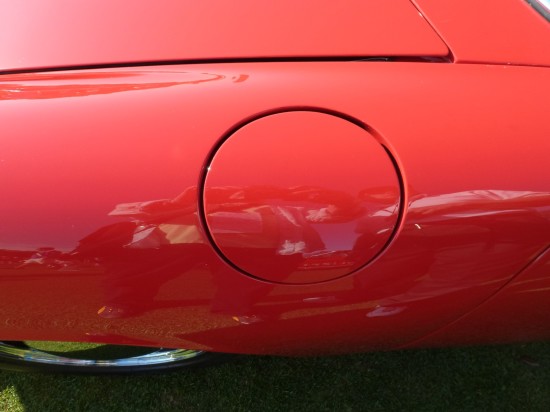
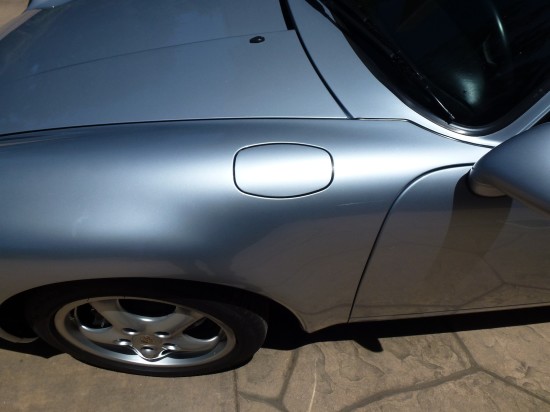
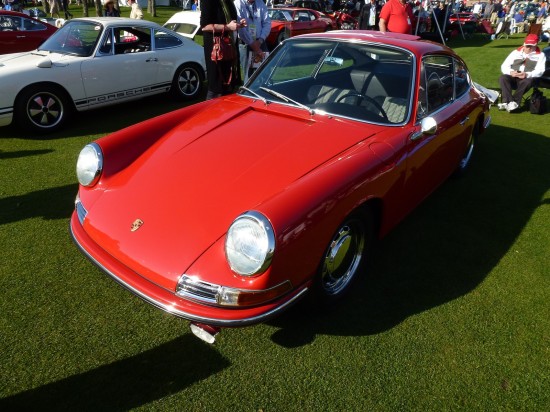
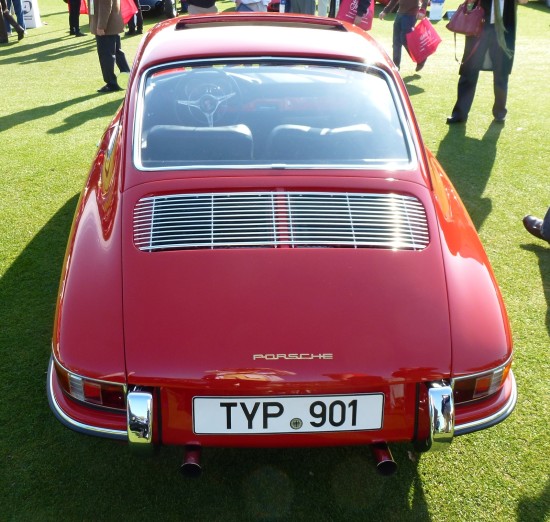

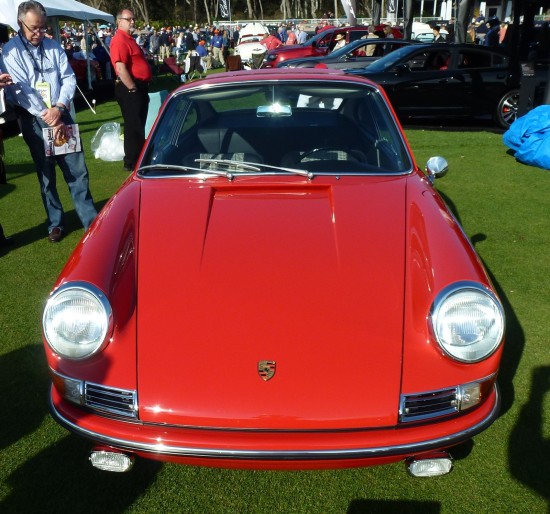
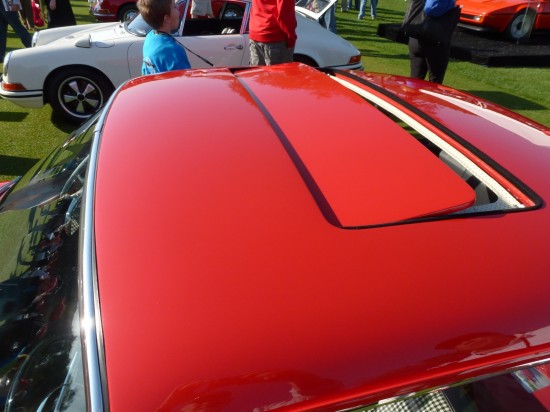


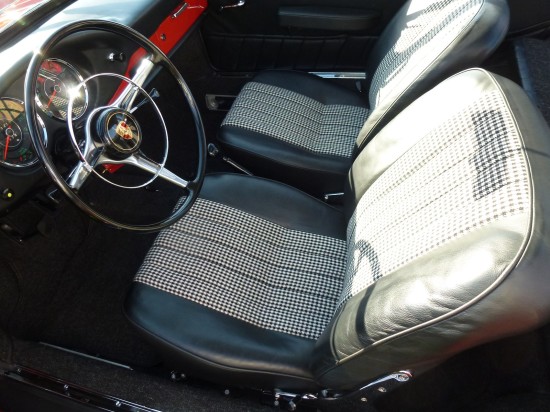

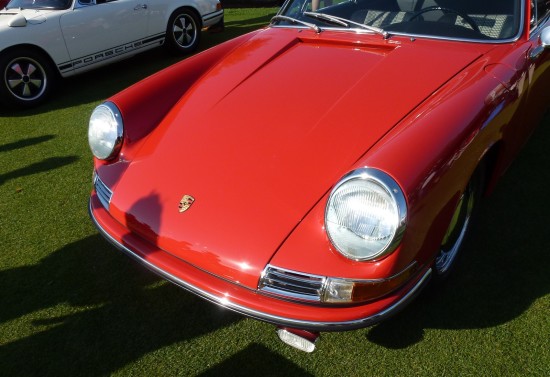
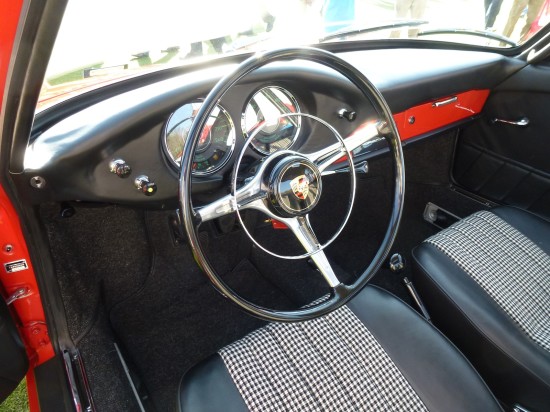
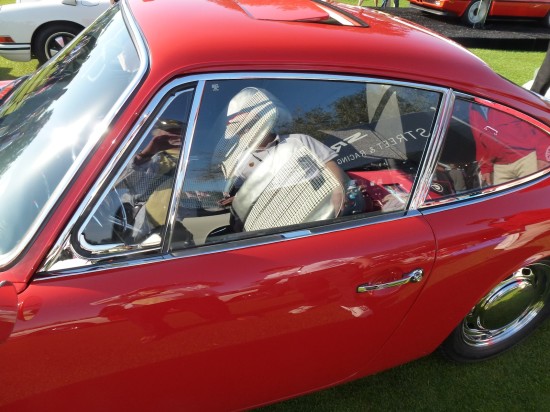
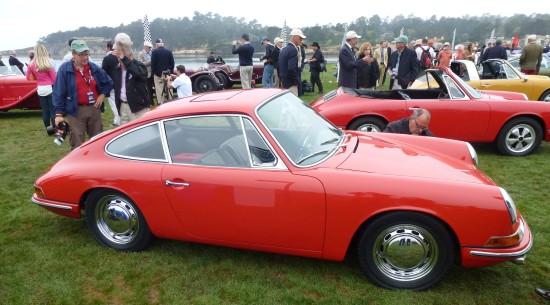
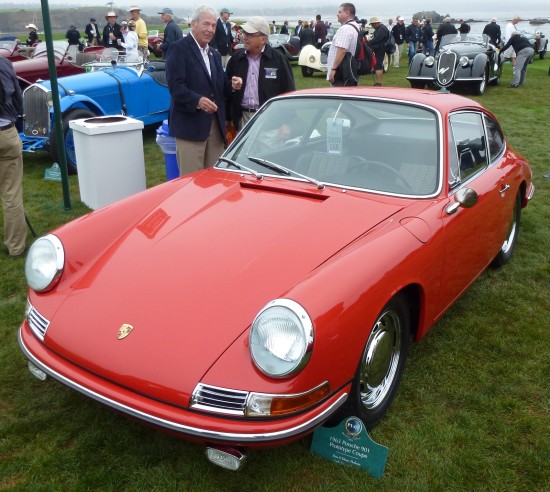
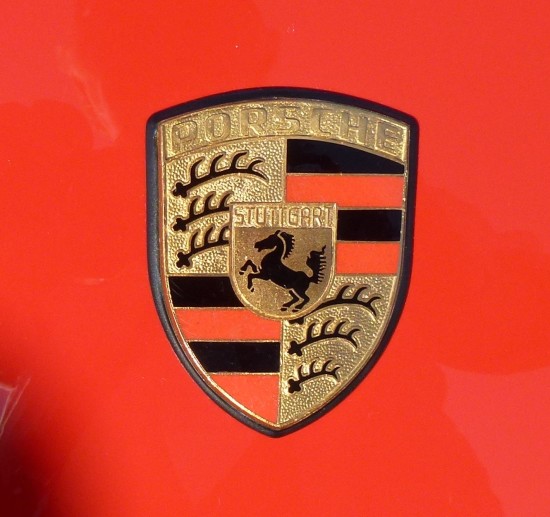
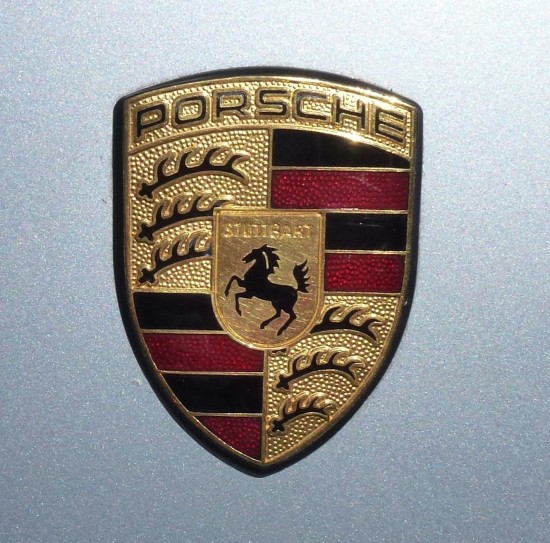
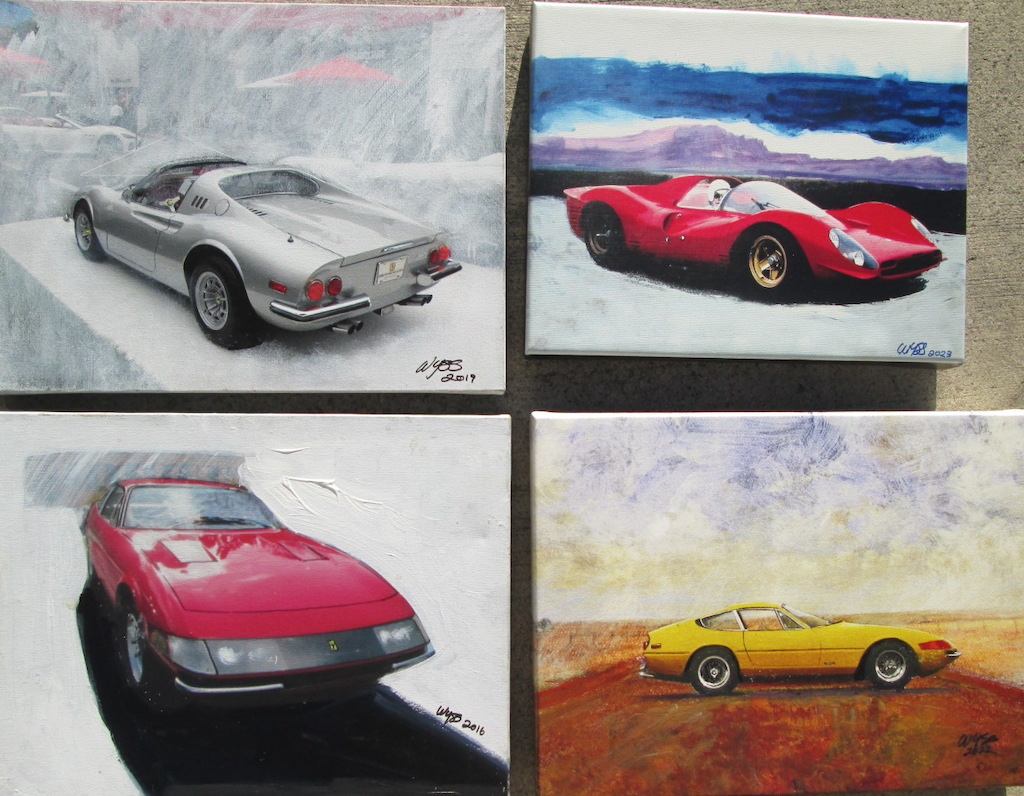

I attended the Frankfurt Auto Show and remember the new 911 very well.
Congratulations Don, it is a wonderful car!
Thank you Mike for a wonderful article. I love your pictures and the comparison to your 911. I remember the day well. What a thrill and it’s hard to imagine that it is over 6 years already. I will see you again this year at Pebble Beach when we celebrate the Iso Rivolta Class with Piero Rivolta. Don
This car is awesome. And a real part of Porsche history.
Special congrats to Don Meluzio who made this possible.
Thank you Voiture collection. I sure love my 901
Not sure if you’re still monitoring this site, but I had a chance to see Barbarossa at the Savoy: what an amazing piece of automotive history and a spectacular restoration by Don Frick. However, I was curious to know which chassis number represents the “second” 901 prototype survivor. I know there was 13 360 that was used as a research car for the cabriolet and Targa that still exists and 13 394, the 902 Prototype that Don Frick also restored which “could” fall into that category, but was unsure which it might be or if I’m missing one. The folks at the Savoy didn’t have a specific answer and neither of those fell into the chassis number sequence Tobias Aichele identified in his writings. I’ve got something of a “scrapbook” of the cars exhibited at the Savoy and wanted to be sure to include that detail on Barbarossa for my 75 Years of Porsche entry: https://myviststothesavoy.wordpress.com/2023/04/05/75-years-of-porsche-the-exhibit-only-entry/#901
Mark, You sure put a lot of work into your review of the cars at the Savoy! Nice work. The second 901 Prototype that you are asking about is 13326, quick blau. It is owned by Alois Ruf. It is completely restored and will be on the showfield at Pebble Beach this year 2023. BTW my restoration was done by my good friend Dennis Frick. Isn’t the Savoy a wonderful Museum!
Thanks so much Don, and I sincerely appreciate the kind words on my ‘scrapbook’. ! I was puzzled as I’d not hear about 13 326 “being found” back in 2019 during its restoration process! I’ve updated my entries on your wonderful 901. Speaking of which, I was looking at it again today — yes, it’s nice having the Savoy just 30 minutes from home — and noticed the valve stems were all wired to the wheels. Can you shed some insight on that? Inquiring minds ‘need’ to know. BTW, your Speedster is my “pick of the litter’ in terms of the Porsches in the exhibit that I covet the most. Great colors, features and restoration of one of my favorite Porsche models.
I’ve now done my homework. It’s been a long time since I can even recall seeing a valve stem retainer. It’s been so long since I’ve seen a performance car fitted with them, given how tubeless technology somewhat eliminated that problem…. but it is one we still deal with on lightweight performance bicycles that use innertubes with threaded valves and retaining rings to keep the valve from “flexing” at the valve stem hole. My apologies for the bother. 😉
I have 13366 it’s a 912 dated Feb 8th 1965. It’s the RHD prototype.
Hello Graeme, is your car in England? Can u post a picture?
Sorry I didn’t get back to you with an answer, crazy busy today. Yes, its actually a 356 thing, and I guess essentially it is a 356 wheel since it was so early. That was a Dennis Frick idea/part! Don
No worries and, again, sorry to have pestered you on that. I can only imagine how busy your are… along the lines of a one-armed paper hanger I’m sure. Thanks again!